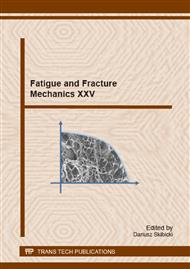p.145
p.151
p.157
p.167
p.175
p.181
p.187
p.192
p.198
The Usage of the Method of Fundamental Solution for Twisting Composite Rod as a Basis of the Local Analysis
Abstract:
The paper presents a resilient torsion of composite bars, which has a cross-section of a circle with a central circular fiber. Composite material is material with heterogeneous structure. It is composed of two or more components with different properties. The problem of torsion of homogeneous prismatic bars was discussed in many publications, however, there is very little work, concerning compute rods. In general form, the discussed question was first asked and solved mathematically by Мусхелишвили. He used a twisting function φ (X, Y), analogic to the stresses function and the rule of de Saint-Venant for homogeneous prismatic bars. On the basis of his work other were created, which include, Векуа i Рухадзе In this article the function of stress presented by Чобаня is used to solve the issue of composite torsion of prismatic rods. On this basis, it was found that the introduction of the stress function ψ (X, Y) simplifies the way of solving prismatic bars composed of different materials, especially when they have polygonal contours. The application of the theory of the function of twisting stresses in the composite rods allows the use approximate methods which can include: variational method, small parameter method or method used in the fundamental solution method. The analytical results were verified using numerical methods [1]. In the fundamental solution method stress concentrations occurring at the border of the fiber and the matrix was used to solve the problem of the composite rod twisting. This gives better results than the use of local analysis
Info:
Periodical:
Pages:
175-180
Citation:
Online since:
November 2014
Authors:
Price:
Сopyright:
© 2015 Trans Tech Publications Ltd. All Rights Reserved
Share:
Citation:


